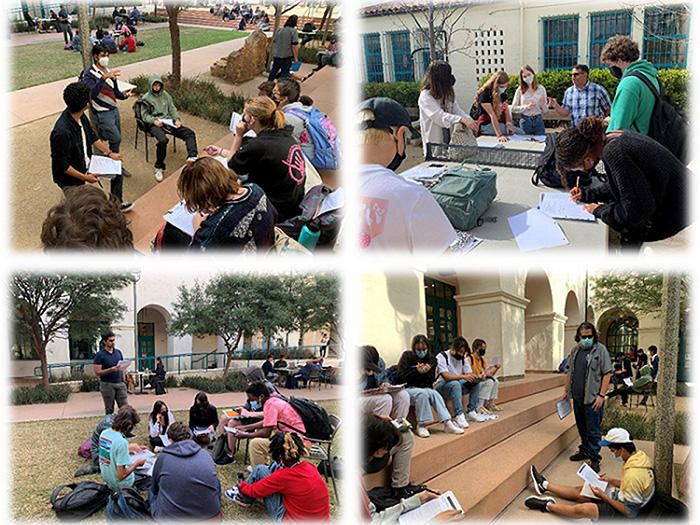High School Students Engage in Scientific Literature Review/Discussions through Journal Club

Scientific articles are currently published at a rate of almost 4 papers a minute. With so much new scientific information coming out of the world’s laboratories, the most common ways the community keeps up with the latest scientific information and breakthroughs is by following science sections of traditional news sites or more often, science focused social media posts such as blogs and tweets. However, with a lack of rigorous oversight on scientific news outlets, facts can get distorted, overhyped, or buried depending on the newscasters’ prerogative. The best place then, to get the most accurate information about a particular scientific breakthrough, is the original scientific publication itself. Nevertheless, the structure and language of scientific publications can seem complex, dry and at times daunting to the untrained eye. With a goal of training the next generation to be comfortable reading and parsing through scientific publications, Dr. Parag Katira, Associate Professor of Mechanical Engineering, is collaborating with teachers Jesse Wade Robinson and Kalle Palmer from San Diego’s High Tech High school to engage high school juniors in a monthly journal club.
Journal clubs have been a standard tool for small groups of scientists to discuss scientific publications of common interest in detail. The general format is to summarize a research article, and then dive deeper into the research methodology, discuss the major and minor observations, and assess the conclusions drawn. Dr. Katira, Ms. Wade Robinson and Ms. Palmer work together to identify recent research articles of significance that would also be related to the science topics the students are covering in school. To engage the diverse interests of the high school students, aspects of the research described are broken down into specific interest areas and used as prompts for guiding the journal club discussion. For example, when discussing a research article in the Biomedical Engineering field, some students might be interested in the biological aspects of the research, some in the engineering technology, some on the healthcare related implications, and others on the socio-economic impacts. During the journal club, students from High Tech High and graduate students from SDSU work in groups to discuss the paper. The high school students are responsible for driving the discussion while the graduate students provide specific insights and explain concepts as required. This format facilitates a dialogue between high school and graduate students on cutting-edge science while empowering the high school students to focus on their areas of interest. Overall, the main aim of this exercise is to familiarize the students with reading and analysis of research publications and encourage them to independently assess the key findings and conclusions. This journal club activity has also given the opportunity to over 90 high school students to visit and experience SDSU campus in an immersive experience with science discussions interspersed with research lab and tech facility tours.
Dr. Katira thanks Dr. George Youssef, Professor of Mechanical Engineering, Dr. Karen May-Newman, Professor of Mechanical Engineering, graduate students Esteban Vazquez-Hidalgo, Benjamin Yeoman, Gudur Ashrith Reddy, Esra Tiftik, Nha Uyen Huynh and Logan Davis-Wallace, and Zip Idea Launchpad lab manager Rene Arvizu for their voluntary support during these journal clubs.

